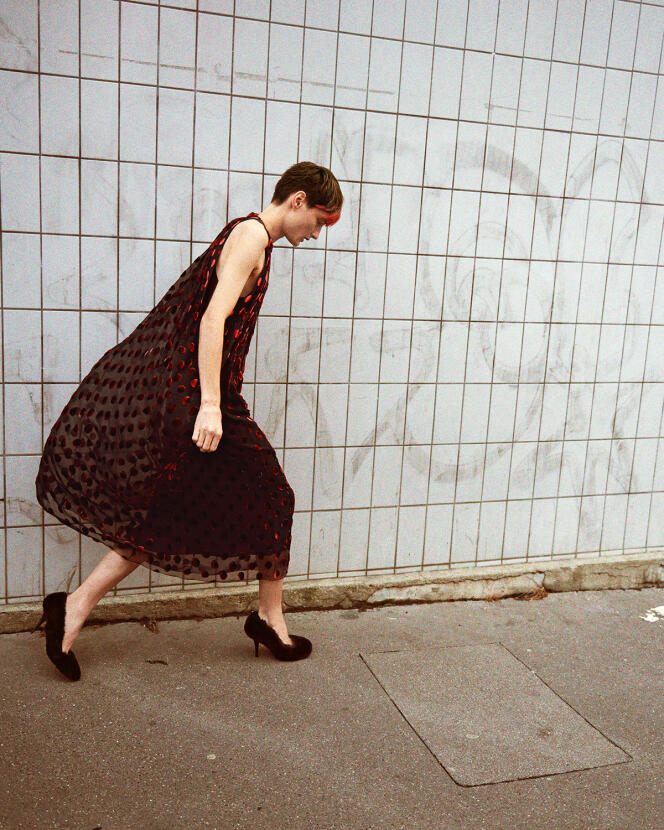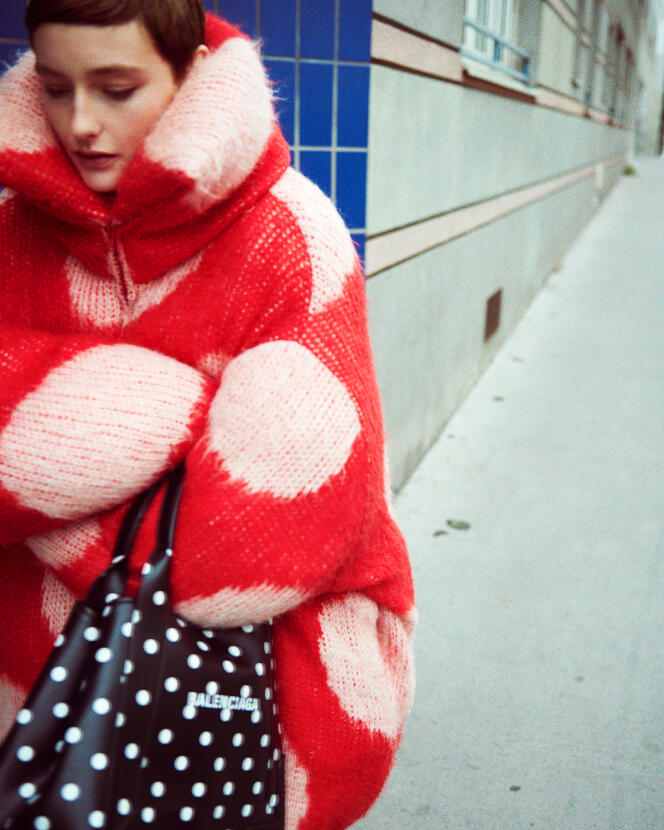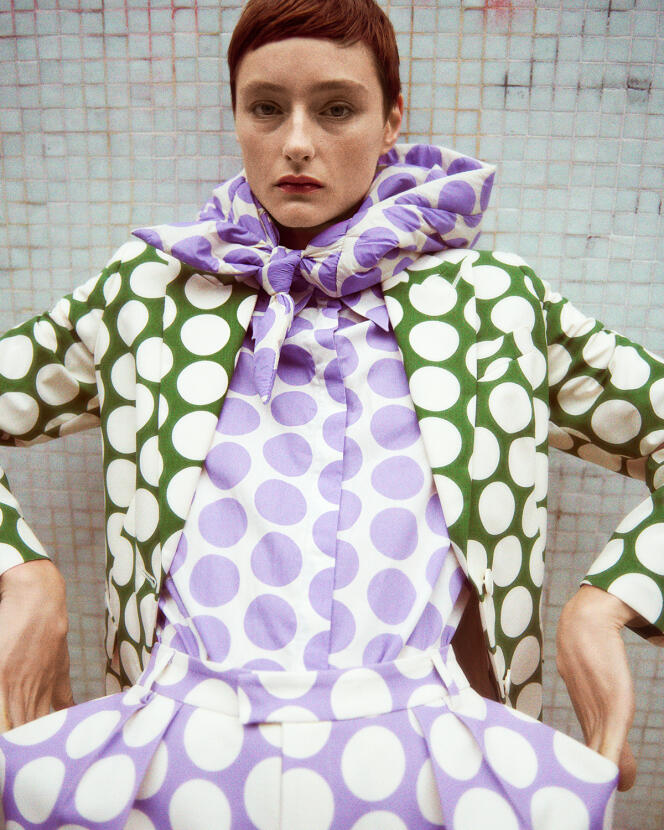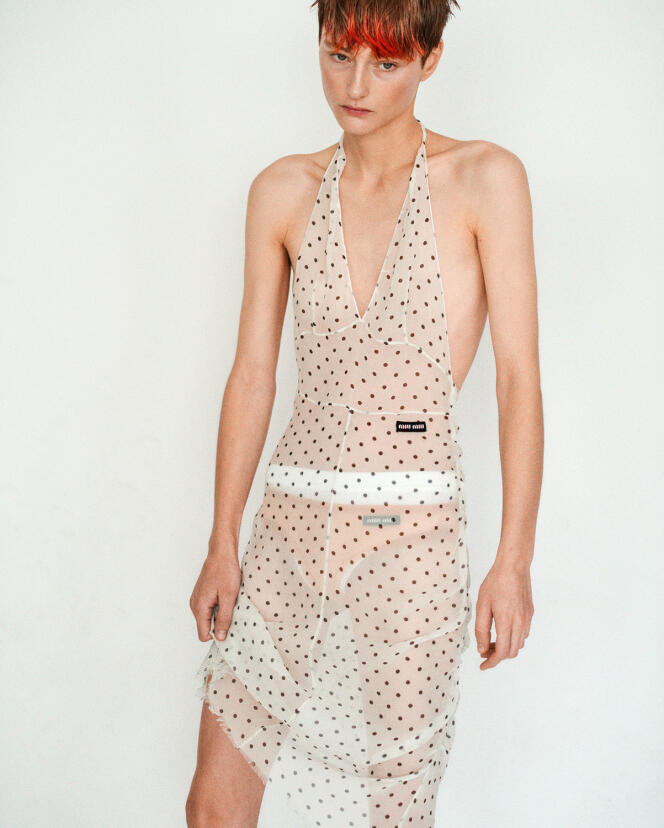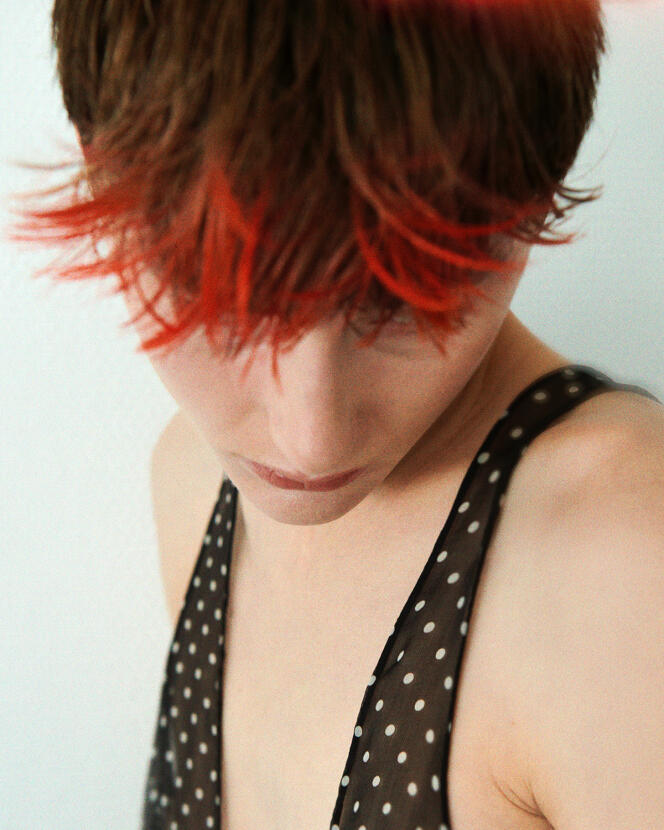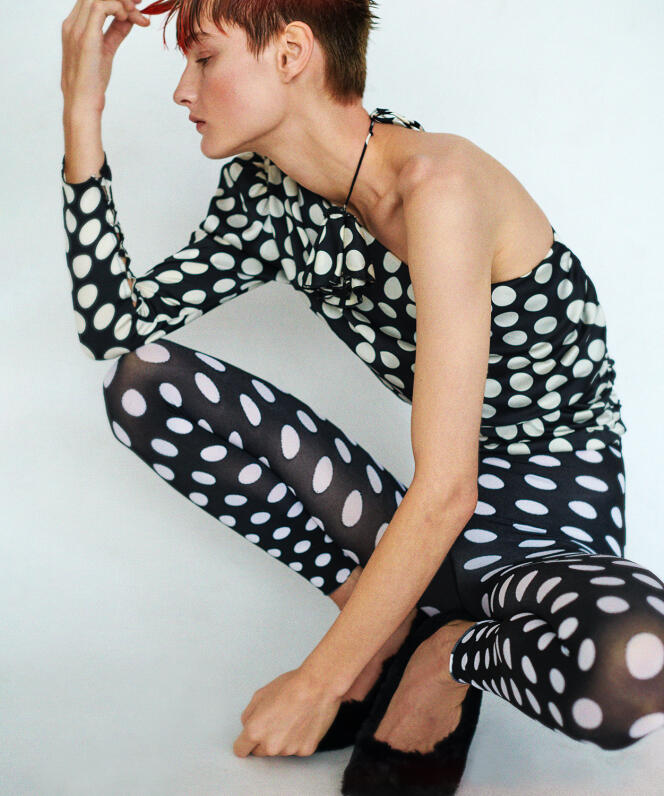JGreat time for peas. This season they take over from summer stripes and thrive on all supports. Do we owe it to Louis Vuitton’s recent and resounding collaboration with the Japanese artist Yayoi Kusama, who nourished her work with her obsession with polka dots?
In 2022, a gigantic effigy of the nonagenarian took up residence on the brand’s emblematic building, avenue des Champs-Elysées, whose six floors were covered with large colored polka dots, a sign tirelessly repeated by the visual artist since the 1960s and now affixed to monogram bags, clothing and accessories for a collection entitled Creating infinity – an infinity within the reach of very few budgets.
But the peas didn’t wait for Yayoi Kusama. Borrowed from gypsy culture, polka dot dresses have become, through flamenco, a sign of Spanish identity. On the screens, the polka dot has also marked certain iconic costumes: Minnie Mouse, Mickey’s companion, Marilyn Monroe in Seven years of reflection, or Laura Dern in Sailor and Lula.
There kitschy final scene of David Lynch’s film, Palme d’Or 1990, shows her wearing a black backless playsuit with white polka dots. An outfit called “of maturity”much more sober (in terms of cut, color and material) than anything she was able to wear throughout this film where she embodies a parodic and hypersexualized femininity.
Playful in its repetition
To the enveloping, reassuring roundness of the polka dot, something playful is added in its repetition. Rather attached to the feminine, he willingly dressed artists questioning gender: from Prince, in a total look on the LoveSexy Tour at the end of the 1980s, to Leigh Bowery, a figure of the London underground of the 1980s-1990s, who questioned through performance the dominant norms in a context marked by the AIDS epidemic – from which he will die. Because the polka dots, in their repetition as uncontrolled as they are obsessive, also have something disturbing. It is not for nothing that in the Middle Ages they were symbolically linked to illness – and to various dermatological symptoms.
It was at the age of 10 that Yayoi Kusama – voluntarily interned since 1977 in a psychiatric hospital in Tokyo – was the victim of a visual hallucination and the red flowers from the tablecloth at home suddenly came to saturate her field of vision. . It was to soothe her anxieties that she began to paint, among other things, polka dots, on every possible surface. “My desire was to predict and measure the infinity of a limitless universe, from my own position, using peas,” she writes in her autobiography, Infinity Net.
In the 1960s in New York, at the forefront of the avant-garde, Kusama launched his own clothing line. Between the performance and the orgy, his fashion shows notably featured large polka dot tunics cut in a circular manner to leave certain strategic parts of the body accessible. In this bygone past, his clothes were thought of as weapons in the ” war “ that she led “against the established order”. Not all peas have the same flavor.
